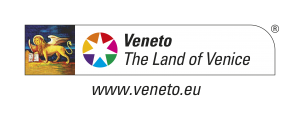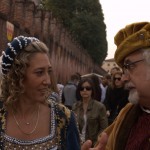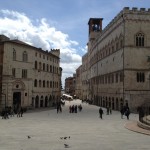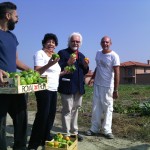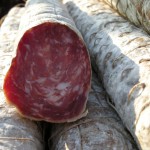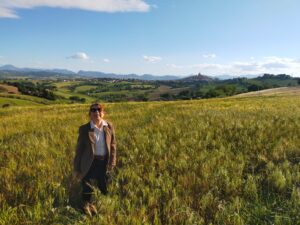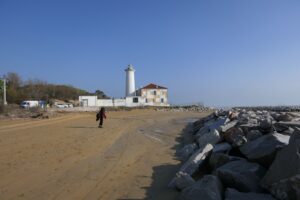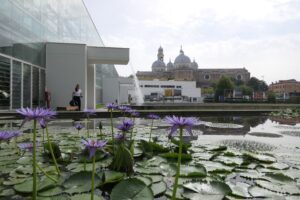Travel in time with this historical reenactment
Vicenza and Palladio
A sightseeing tour, themes: art and architecture!
A visit to Vicenza begins from Palladio, of course!
Visit his last work, the Teatro Olimpico, and the Basilica (so called even if it is not actually a chruch). Palladio arrived in Vicenza in 1520, he began as a boy apprentice and he was helped to grow into a great architect.
Recently he has been defined by American Congress the father of American Architecture! One has only to look at the White House…
⇒ Watch the full web serie Palladian Villas Tour in Veneto
Cover pic courtesy of Marco Blue Serge (Flickr User @27773880@N02)
Video full text: Vicenza
Where does a visit to Vicenza begin?
From Palladio, of course!
From the Teatro Olimpico.
Taking to the stage in this theatre is something of an emotion!
It’s Palladio’s last work, begun in February 1580.
Palladio died in August,
and it represents his ‘testament’.
Palladio in Vicenza, Act II: the Basilica.
It’s called a Basilica, but it’s not a church.
First it was a medieval building and then a gothic one which simply acquired the name Basilica.
Palladio, who was passionate about Roman and classical architecture, drew inspiration from the books of Vitrivius.
He used the same classical Roman styles, reproducing them here,
in the place where justice was administered and where business and civil life took place.
So what was civil life like in Vicenza then?
At that time it was the centre of the silk trade.
The north-east was already rich and business-oriented, even in the 16th century.
Palladio ended up in a favourable setting.
He began as a boy apprentice and he was helped to grow into a great architect.
What is more he was born in a period of great economic growth.
Palladio arrived in Vicenza in 1520.
He was a simple apprentice stonemason.
The Noble Gian Giorgio Trissino became his patron.
Trissino was a strange man, with a terrible expression, a political revolutionary.
He led the revolt against Venice and ended up being exiled in Rome.
There he witnessed what Leo X, Raphael and Michelangelo were doing.
He had a dream – to transform a small provincial city into the capital of architecture.
He had the brains, but needed a doer: the young Palladio.
Trissino adopted Palladio, paying for his studies, and he was to become a great architect.
Palladio was the son of a miller and at 13 began working in a workshop.
His experience of working with his hands helped him win his battle.
His architecture has successfully spanned the centuries,
constituting a strong link with the worlds of Rome and Greece.
Why did he have such an obsession with classicism?
At the time Palladio’s work did not seem so classical.
It was innovative!
Let’s imagine the space ships of brilliant-white Palladian buildings,
landing on the fabric of the city.
There’s a political motive too: the people of Vicenza hated the Venetians.
Returning to the city’s roman roots, therefore, meant being better than Venice.
Being different.
Palladio was the right man at the right time.
He became the architect for all the wealthy families of Vicenza.
He also knew how to save them lots of money.
He invented and patented a particular type of triangular brick.
When joined together they formed the columns, which were then covered in simple marmorino plaster.
It was made by mixing marble powder and lime which, when smoothed, resembled stone.
The walls of this building, for example, were never covered.
Some of his buildings were even painted.
Thus, avoiding the use of heavy stones meant spending less.
He was an inexpensive architect, which is why he was so liked.
He invented low-cost architecture!
So, in short, Palladio was very shrewd.
He became famous in Vicenza by using classicism, an evergreen, as a lever
and took advantage of a moment of great economic splendour
and competitiveness with Venice.
Nowadays, he still represents the Americans’ dream of cultural elevation!
On 6 December 2010 the American Congress defined Palladio the father of American Architecture.
One has only to look at the White House.
Palladio represents their connection with the classical world.
Americans asked themselves: what shape will the President’s house be?
Certainly not the shape of a small French or English building, the royal houses of Europe.
America’s elite chose the shape of a Venetian Villa.
Republican architecture.
Produced in cooperation with the Official Tourist Board

